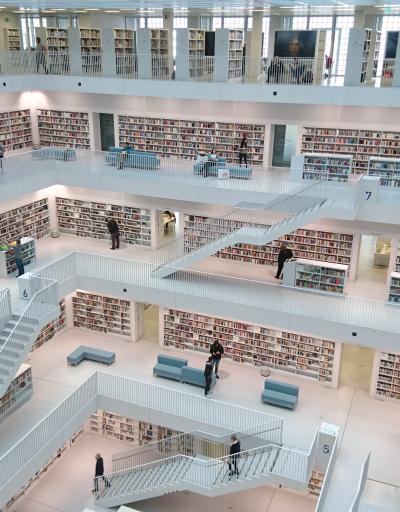
Shutterstock
Cultural accessibility guide “kaunas for all”

Where
Lithuania
Lithuania
When
2020
2020
Who
Kaunas 2022
Kaunas 2022
Website of the policy/measure
Website
Website
Read the full report
Go to full report
Go to full report
Description of the policy/measure
Cultural accessibility guide for everyone “kaunas for all” is the project developed by kaunas – european capital of culture 2022 (“kaunas 2022”), designing happiness programme in 2019. this edition of guidelines is the first of a kind for cultural organisations, facility managers and event organisers to make cultural objects and events more accessible for all groups of society as well as people with special needs in lithuania. in 2018, public organisation “kaunas 2022” became a member of design for all europe network. this is the act of the organisation’s commitment to contribute to fostering a culture of accessibility and design for all. one of the main missions of the designing happiness programme is to foster design ideas for all. at its heart is the right adaptation of environment to the diversity of people. it is an intervention in the environment, products and services to ensure that everyone, regardless of their abilities, needs, culture, age or gender, can participate fully in a variety of social and cultural activities. cultural accessibility guide “kaunas for all” is the first attempt in lithuania to compile the most important grammar of accessibility culture, to define concepts, good practices, to put together tips and useful references. it is the first such toolkit for cultural organisations and operators that is open to wide public and well as seen as an open platform for further improvements. why it is important? because we all – temporarily or for a long time - face one or another barrier and only rarely we manage to avoid it. society is ageing. human cognitive or emotional disorders can be temporary or permanent, making it a serious problem in a daily life and old age. accessibility promotes active aging and thus helps to reduce the burden of caring for older people in the society. according to sociologists, people with disabilities are not disabled by the existing scientific or psychological disorders, but by the social system of the state itself and the society in which they live. public infrastructure operates according to the rules of non-disabled persons, according to which the disabled persons are not included in the social environment that is acceptable to healthy people. the term “accessibility” is often equated with disability, but in the field of culture and heritage, accessibility also means a situation in which the characteristics of any field can be accessed by all people without discrimination on grounds of sex, age, scientific status, etc. in other words, it is a situation where everyone can use infrastructure, services, equipment, goods and engage in activities independently, safely and conveniently. cultural accessibility guide consists of theoretical and practical parts. the theoretical part defines the importance of accessibility, the notion of design for all and universal design, describes the main steps to ensure accessible events emphasising communication, infrastructure, quality of different experiences (visual, acoustical, etc.) and accessibility services. practical part consists of accessibility symbols and pictograms (over 30 sighs) designed by partnering design agency “critical”. the created uniform system of signs and pictograms is open for everyone and is free to be downloaded and used by any private user or organisation for greater and better communication on accessibility to mark events and/or venues. there is a checklist prepared for cultural or other events’ organisers at the end of the guide to ensure the smooth organisational process, organising accessible events and understanding the scope of preparational work to be done on the way. cultural accessibility guide is seen as an open platform where cultural and other operators as well as individuals are invited to give their feedback, comments and work together to ensure a greater accessibility in the city.
2005 Convention Monitoring Framework Goal(s)
Area(s) of Monitoring
Cultural Domain(s)
This measure was reported by civil societyResults achieved
Cultural accessibility guide “kaunas for all” was presented to local community of cultural operators and the ministry of culture at the end of 2019. it is worth to notice that the guide is part of our wide communication campaign and among other projects dedicated to promoting accessibility topic to wider audience. in 2019, we invited kaunas community to celebrate the international day of happiness and dedicated it to the topic of accessibility: 160 events were organised in total, 36400 people participated, 130 organisations got involved with various activations and actions, more than 1.5 million people heard our message. in 2018-2019 designing happiness programme held 4 strategic design for all workshops collaborating with the experts of eidd (design for all europe) network and international partners to broaden the notion of accessibility and introduce design for all ideas focusing on physical and mental accessibility: more than 6 organisations, over 50 professionals and community members got involved. we are more than happy to notice that our communication campaign incited broader discussion on accessibility among cultural operators and inspired a great number of new projects in kaunas and across the country. to mention just a few of them that are being planned by our partners: kaunas chamber theatre plans to adapt up to 25 performances adjusting them for all and for people with special needs (deaf, blind, foreigners, teenagers); kaunas pazaislis music festival plans to prepare outbound musical programme to be performed in retirement houses and/or hospitals specially designed for seniors who can’t go out for concerts; historical presidential palace of the republic of lithuania in kaunas plans to prepare 4 new guides for people with hearing and visual disabilities and in 4 foreign languages; sugihara house museum plans to create a new outdoor exposition for people with reduced mobility.


